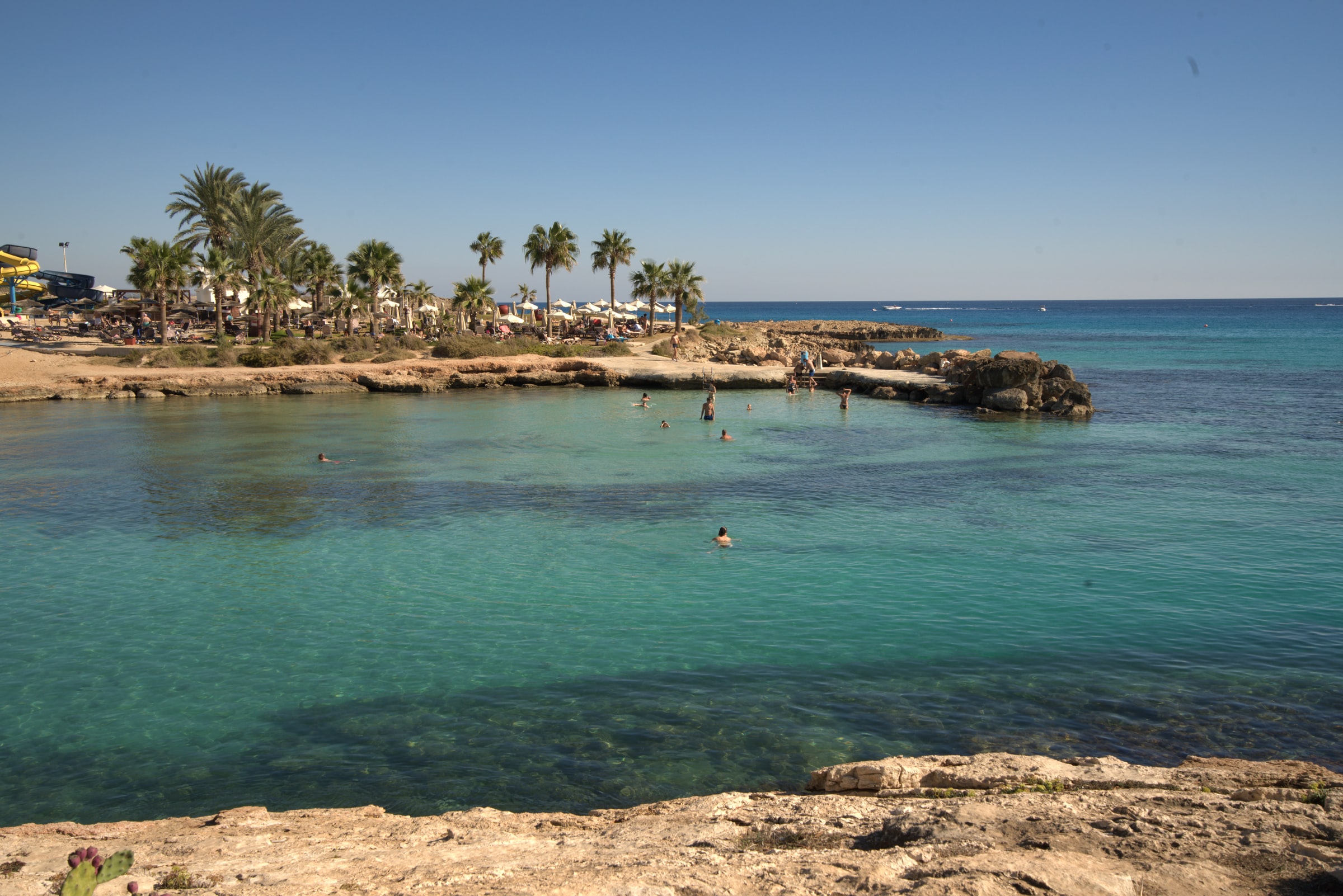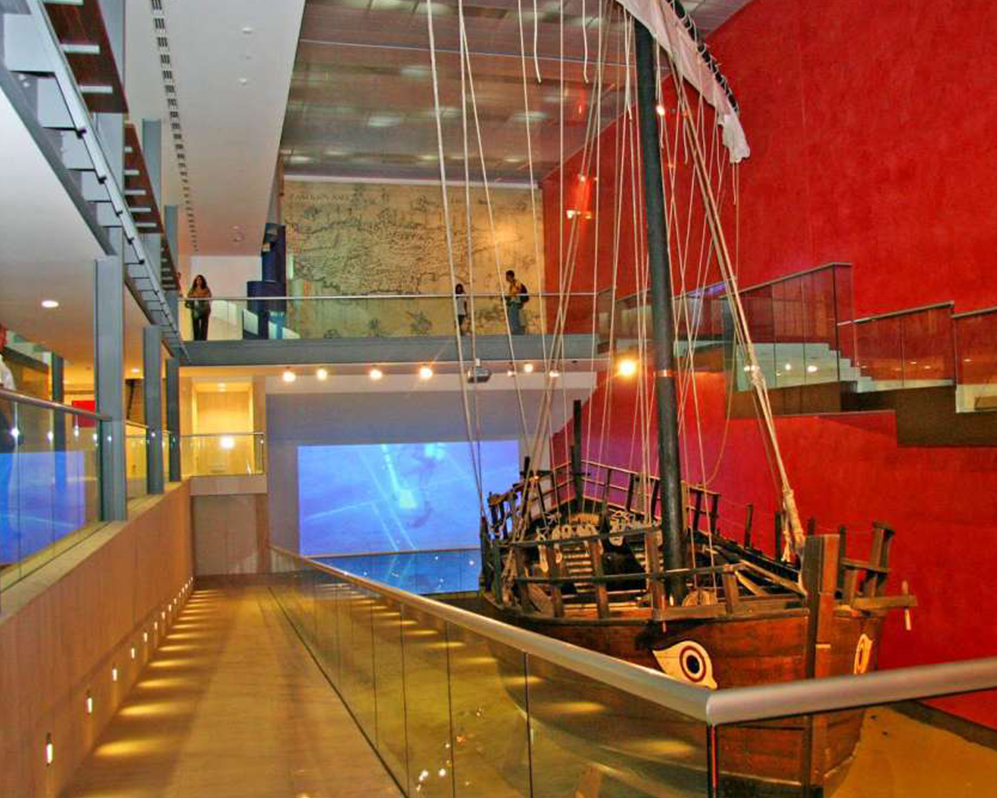
OUR LOCATION
Our location & more about Ayia Napa
Our hotel enjoys an excellent location, apx. 300 meters from the most beautiful white sandy beach and picturesque fishing port of Ayia Napa , close by the Thalassa Municipal Museum of the Sea, while the full of live City centre is apx. 300 meters away with its numerous bars, restaurants, shops and nightlife.
The Monastery
Agia Napa Monastery is the medieval archaeological landmark of Agia Napa. The Monastery was built around 1500 A.D., but inside the old church lies a cave which suggests it may have been used as a place of worship during an earlier period. The Monastery is dedicated to the Virgin Mary because, according to a local legend, an original icon of the Virgin Mary was found by a hunter in the cave. The Monastery originated as a women’s convent, was later converted into a monastery, and then, in 1978, became an Ecumenical Conference Center. The cypress tree outside the monastery is believed to be more than 600 years old. This tree, with its remarkable size, has its own part in the history of Agia Napa. Under its leaves, the Greek 1963 Nobel Prize Winner Giorgos Seferis wrote some of his greatest poems dedicated to Agia Napa, which became famous all over the world. He was the first to recognize the true beauty of the area when Agia Napa was still just a picturesque fishing village.
Thalassa Museum
Located at the centre of Agia Napa, the presence of the Museum in its multi-purpose design serves to display sea artifacts, host symposia, corporate events and concerts, traveling art exhibitions, and to conduct a variety of entertaining, scholarly and educational programmes where the audiences could actively participate. The main highlight of the Museum, it is the “Kerynia II”, a life-size replica of the ancient ship “Kyrenia”. The “Kyrenia Ship” is a Mediterranean trading ship, which it was built in the early 4th century B.C. and is the oldest Greek vessel ever discovered. Andreas Kariolou who was seeking for sponges accidentally discovered it, in 30-meter-deep waters off the coast of the town Kyrenia on Cyprus in 1967. Among the cargo recovered were approximately 400 amphorae for wine and olive oil carrying, and for the storage of almonds.
Entertainment
Night Life: The night life of Agia Napa is very varied and offers something for everyone, from Family Entertainment bars, Cafe/Lounge Bars, Karaoke bars, Live Music, Discos and Clubs Eating Out: Variety is the spice of dining out in Agia Napa, where countless restaurants specialise in a host of cuisines from around the world, everything from the romantic and traditional, to fast food and pub-grub being on offer. Whether it is a Big Mac, fish and chips, a Chinese take-away or formal French you fancy, you wont have to go far to find it. Local cuisine: Visitors are well advised to try the Cypriot fare. Highly recommended is the typical Cypriot meze, made up of between 15 and 30 bite-sized island dishes.
Beaches
Agia Napa legitimately claims one of the most exceptional coastlines in the Mediterranean. With crystal-clear waters, golden sandy beaches, and delightful sunshine, it offers a blissful experience for bathers of all ages. What’s also noteworthy is that all of Agia Napa’s public beaches have been awarded the prestigious Blue Flag of Europe. The Blue Flag is an annual recognition given to beaches and marinas that meet a series of criteria set by the International Foundation for Environmental Education (FEE), which include water quality, environmental education, beach/marina management, and safety.
As of 2024, Agia Napa boasts 16 Blue Flag-certified beaches, along with one marina, totaling 17 Blue Flag awards. This makes Agia Napa the municipality with the highest number of Blue Flag beaches in Cyprus. The 16 beaches in Agia Napa that have received the Blue Flag designation are: Konnos Bay, Limnara, Ammos tou Kampouri, Gliki Nero, Pantachou, Loukos tou Manti, Katsarka, Pernera, Vathia Gonia, Nissi, Nissi Bay, Landa, Makronissos, Ziaggi, Louma, and Agia Thekla. Additionally, the Agia Napa Marina has been awarded the Blue Flag for its environmental standards and services.




